Vintage Home Cafe Studio
A Quiet Dialogue Between Light and Material
2025.08.13
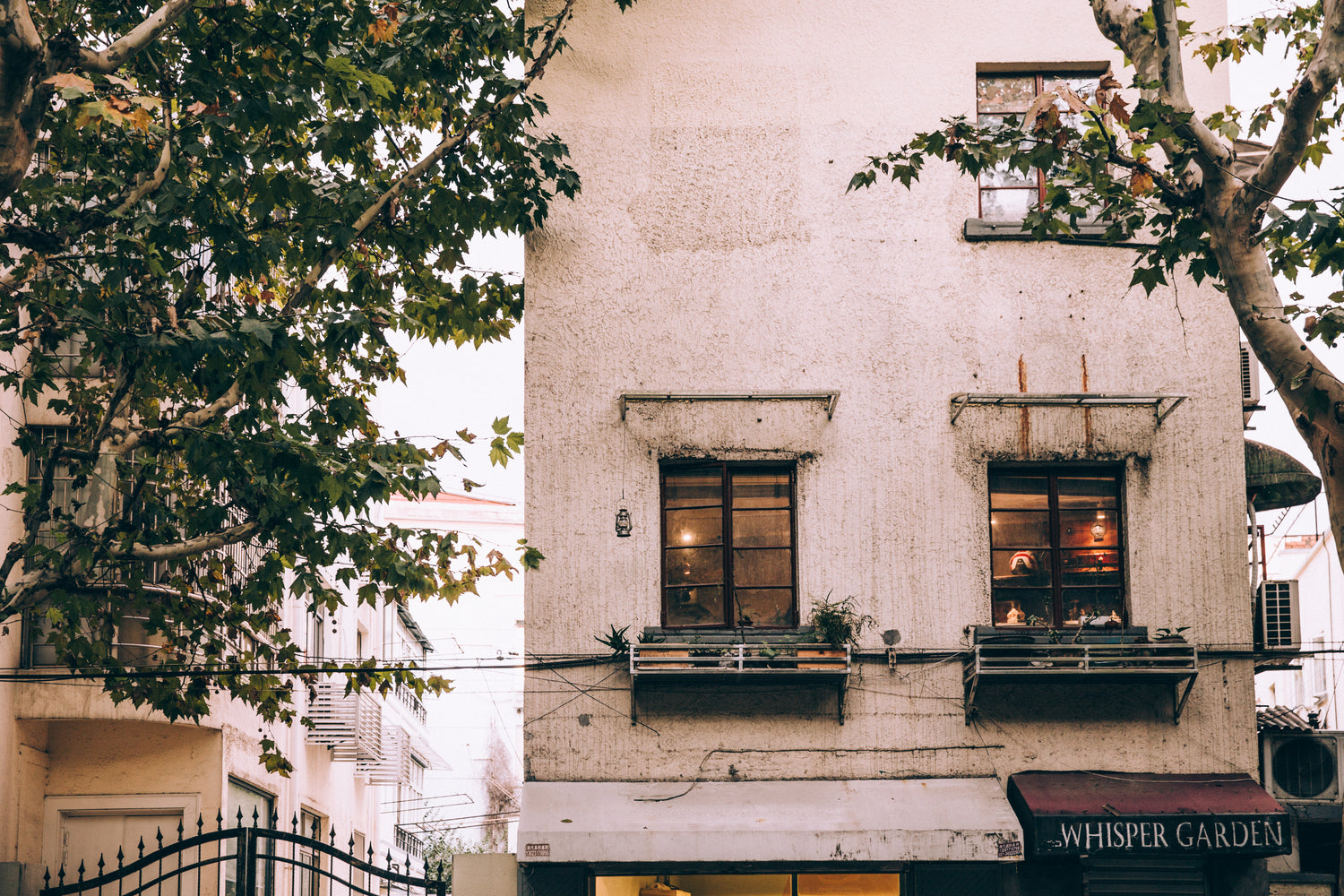
Years ago, walking through Stockholm’s old town, we turned a corner on Nytorgsgatan and stopped. A small shop, entirely wrapped in wood, stood before us. Warm light spilled through the windows, softening the cold evening air. We stepped inside almost instinctively.
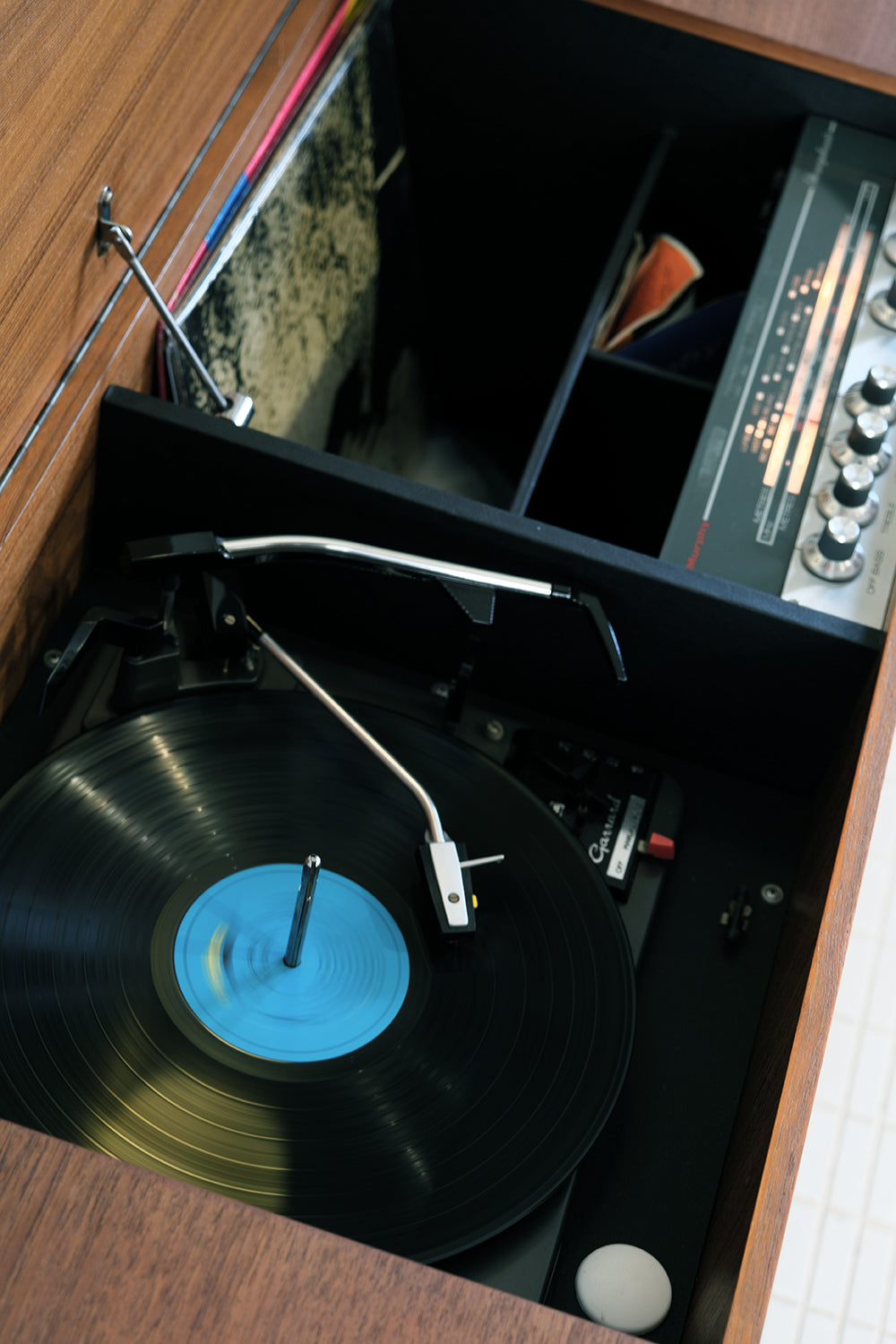
The space was modest yet composed, every object resting in its place. Two wooden seats faced the glass; on the table, a bottle of rosemary-infused water waited for guests. The owner’s welcome was unforced, the kind that allows a person to settle without thinking. That day stayed with us—a reminder that a space can hold more than function; it can hold time, atmosphere, and a certain quiet generosity.
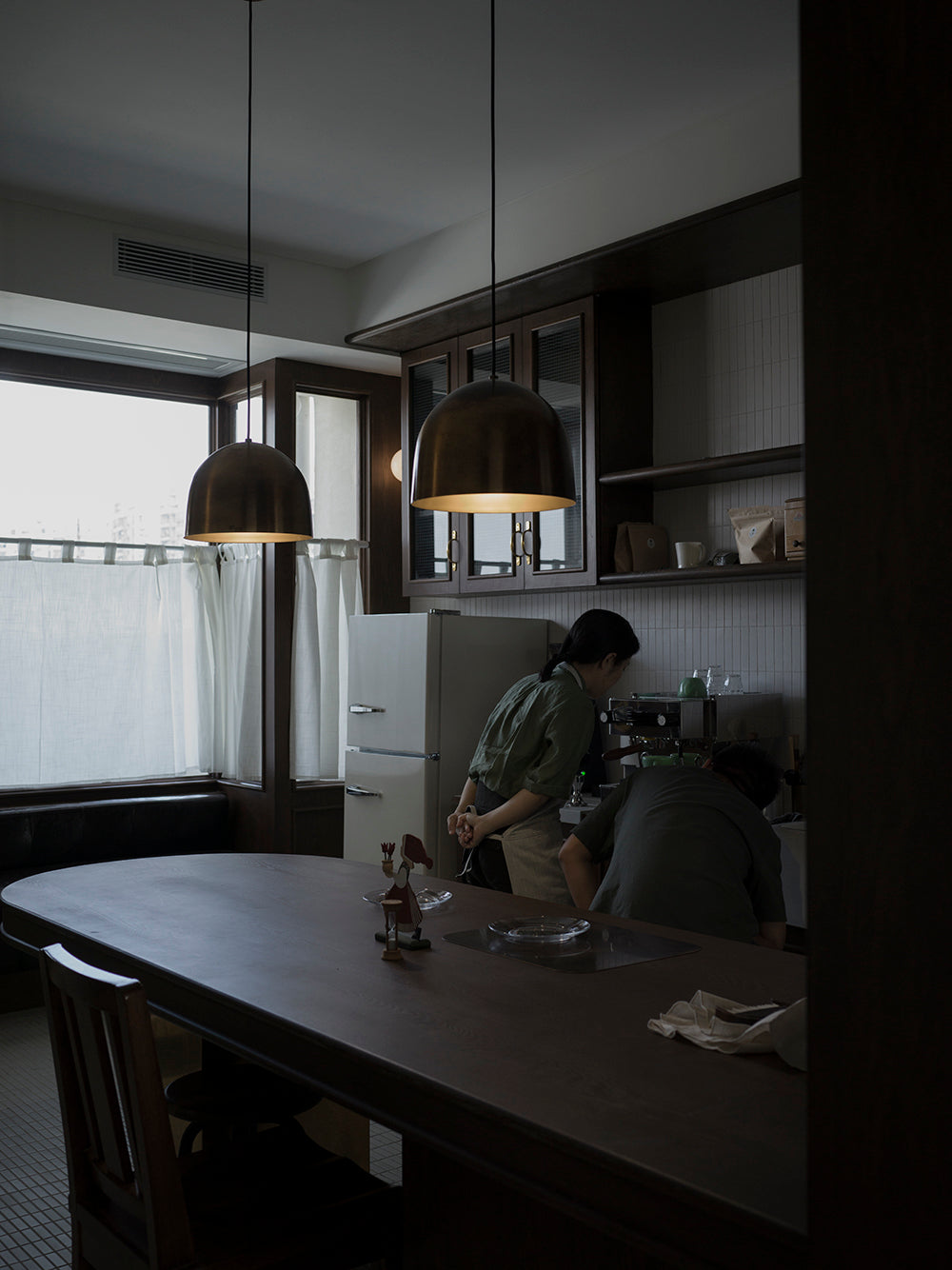
When the owner of Vintage Home Cafe invited us to design her coffee studio, that memory returned immediately. The site was long and narrow, with daylight at both ends and a single window framing the street. It had the bones to be more than a workplace: the potential for a room that opens itself to the city while holding a calm interior life.
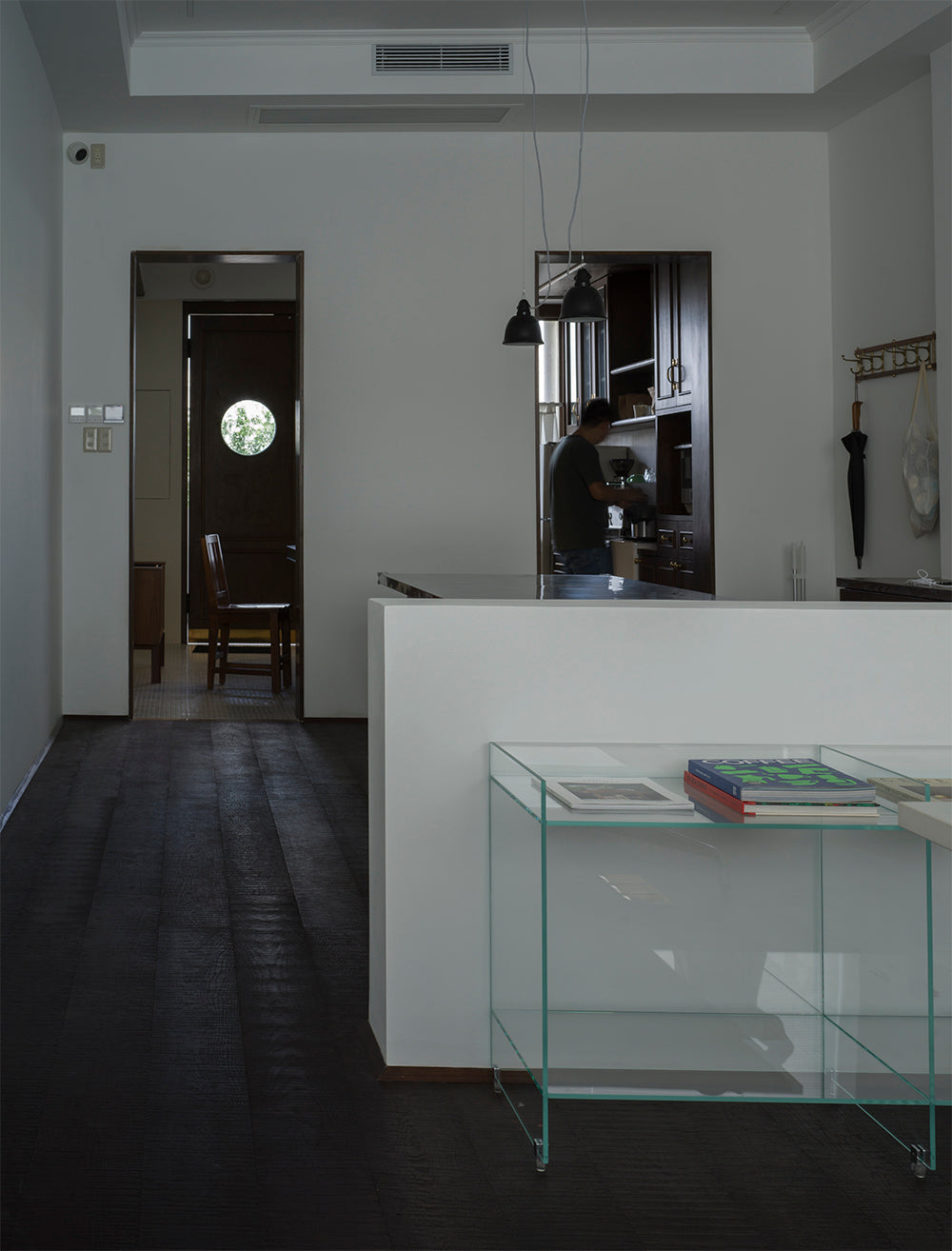
We began with light, letting it form the framework of the design. Glazing at each end was kept clear, creating a visual corridor where daylight travels unbroken. Floor and ceiling finishes were chosen for their ability to carry and temper this light, allowing it to shift from a cool morning clarity to the warmth of late afternoon. The space changes subtly with the hours, giving it a quiet sense of time.
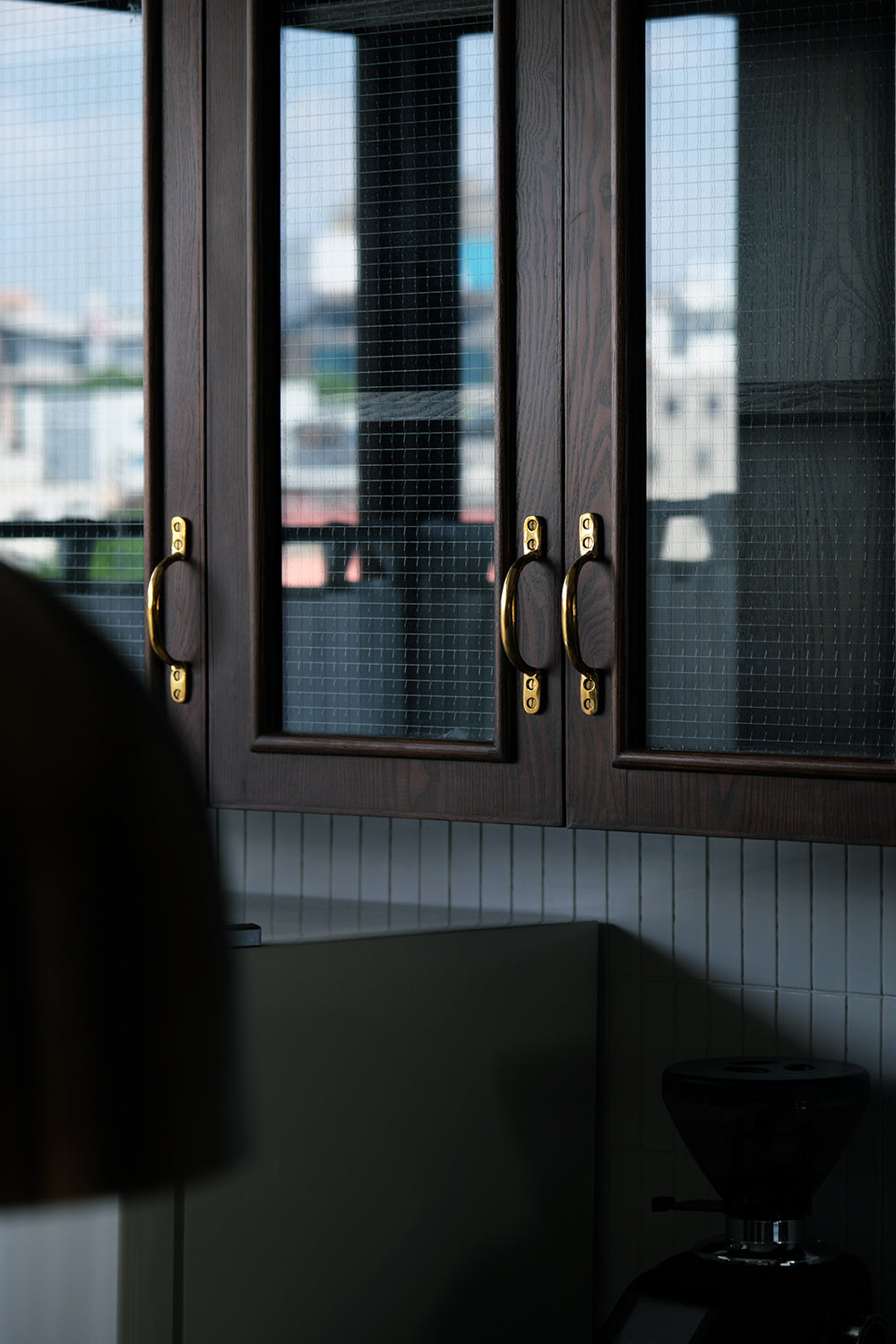
Materiality followed. Dark-stained oak brings density and depth to touch, its grain catching light in restrained highlights. Brass accents—on door handles, hanging rods, table legs, pendants, and floor thresholds—were left uncoated, allowing them to oxidize naturally. Over time, their surfaces record touch and use, developing a patina that stands in dialogue with the timber.
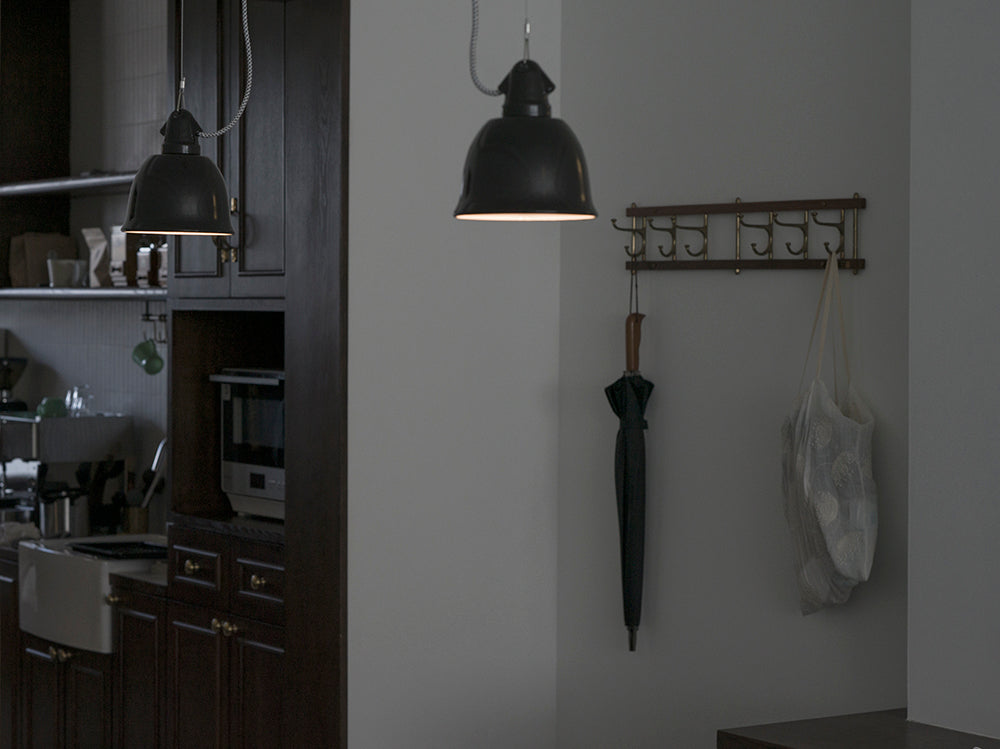
The layout resists strict separation. Two passageways link the tea area with the work area, letting movement flow without the compression often felt in narrow rooms. Low timber partitions define function while keeping sightlines intact. The entrance, set slightly back, compresses the approach before releasing into the main room, while furnishings sit low to align the eye with the exterior view. Deliberate areas of emptiness hold reflected light and shadow, giving the space room to breathe.
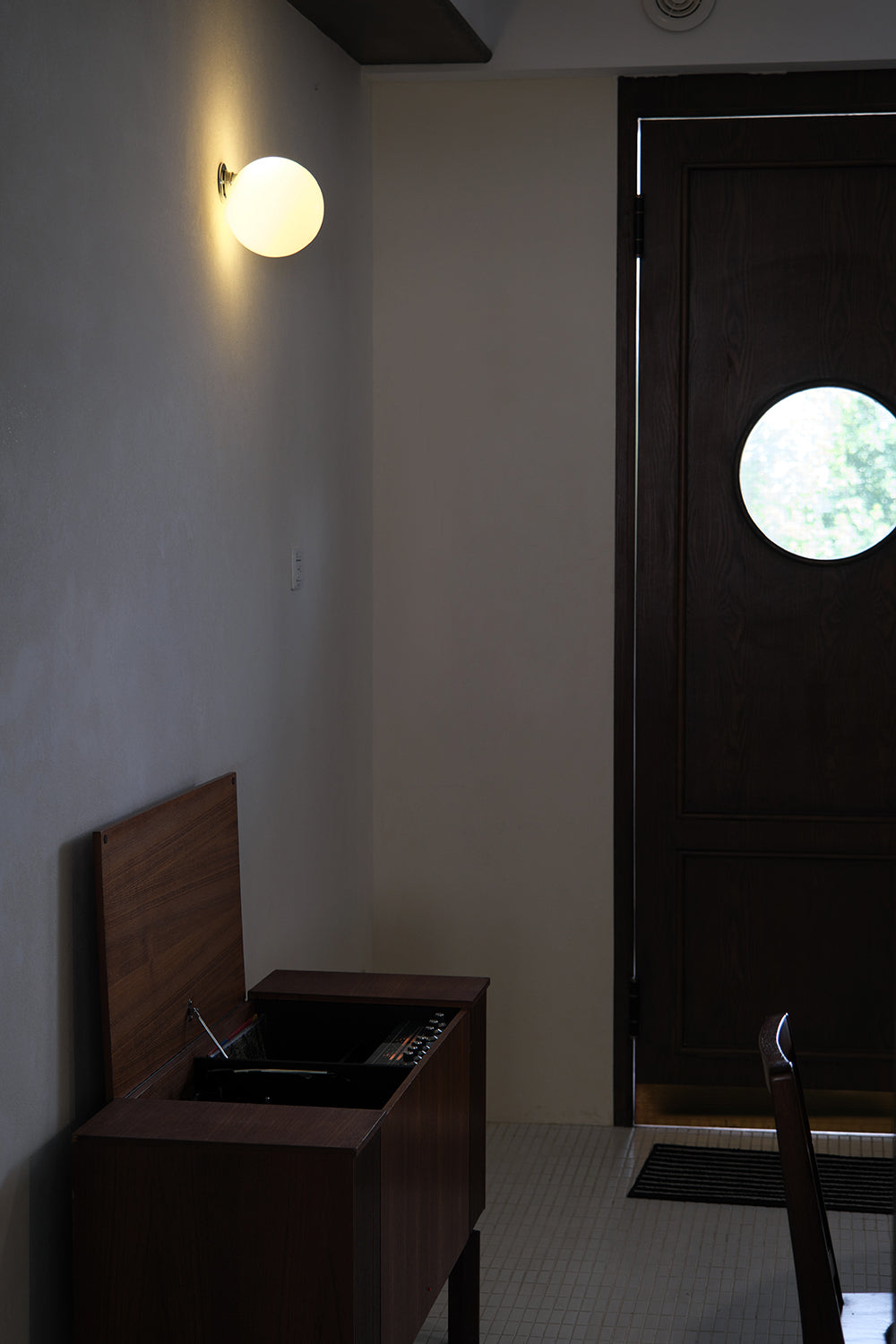
In the finished studio, light moves in a slow sequence from dawn to dusk. The surfaces respond, the brass deepens, the oak settles into its tone. It is a place connected to the city, yet set apart from it—a room for work, and equally, a place to pause.
